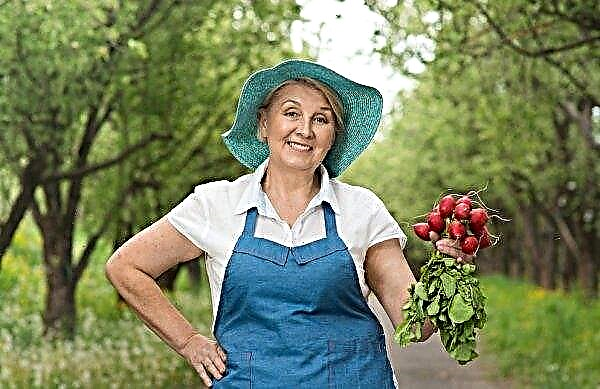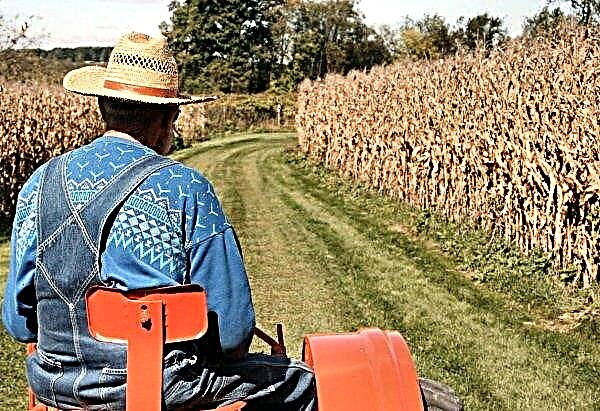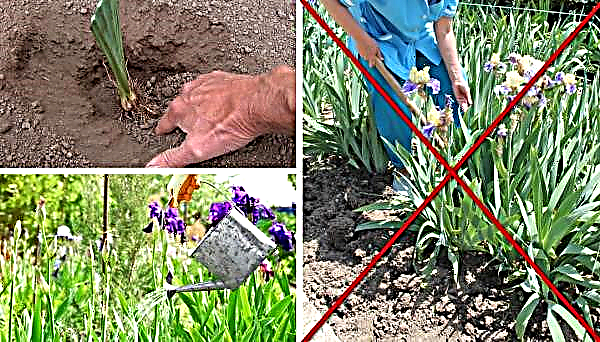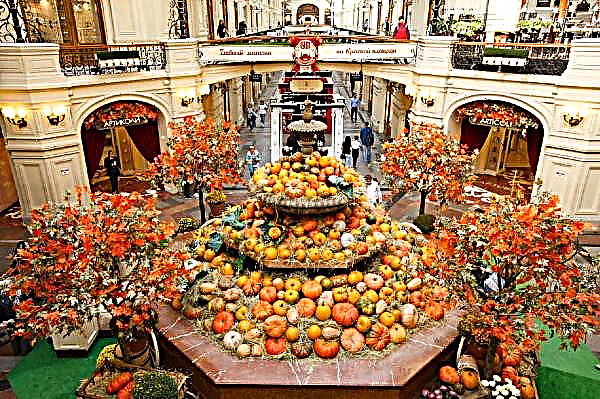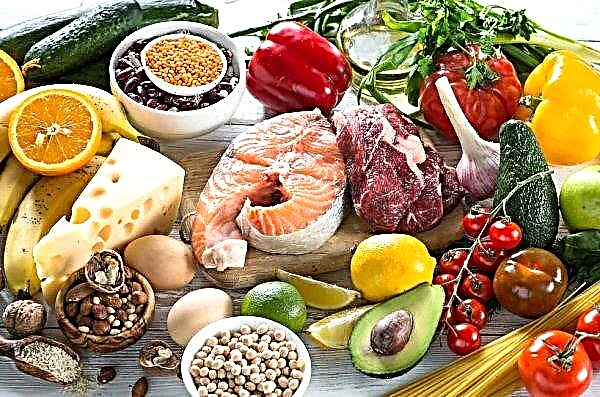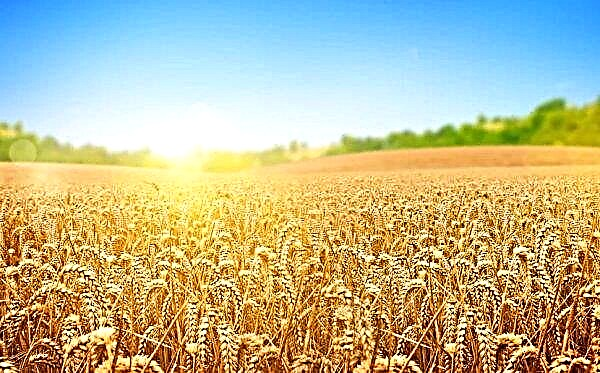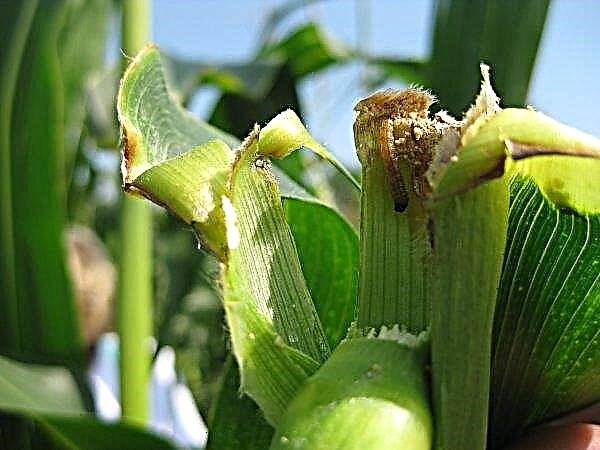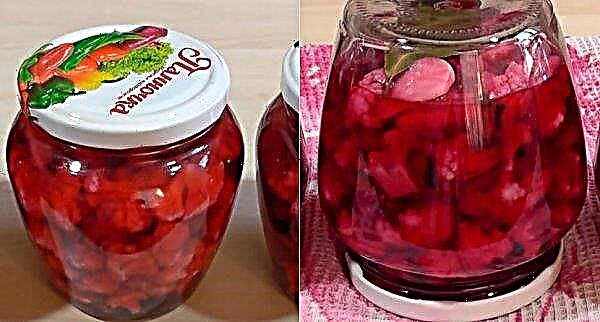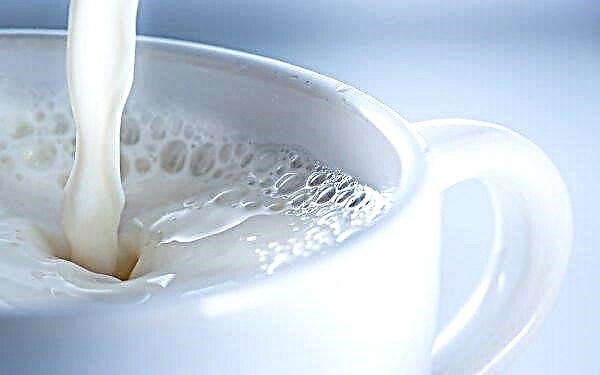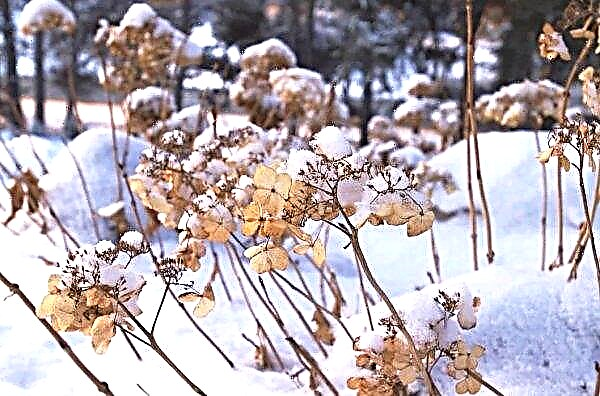One of the most popular cattle breeds previously is Krasnogorbatovskaya. These cows are almost universal because they are undemanding and have good performance. However, despite this, they still lose their popularity every day. What is the reason for this, why are the Krasnogorbatovskiy burenki attractive and what conditions of detention they need, you will learn from the article.
Breed description
This breed originated in Russia when in the 19th century several Tyrolean cows were imported from Switzerland, which had problems with acclimatization and getting used to food in a new place.
Noting the positive characteristics of Swiss burenoks, Russian breeders crossed them with a Great Russian breed and as a result received strong, healthy and adapted calves to Russian living conditions. The breed was officially registered in 1926 in the Nizhny Novgorod region, from where it subsequently began to spread.Did you know? The word "red" in the name of the breed indicates a suit, which should be entirely cherry shades, and "Gorbatovskaya" - to the Gorbatov district, where the breed was bred.
 Krasnogorbatovskiy cows are remarkable for their powerful body and bright color, and also have the following features of appearance:
Krasnogorbatovskiy cows are remarkable for their powerful body and bright color, and also have the following features of appearance:| horns | medium length, have a feature - the ends are painted in dark color. |
| head | small |
| neck | wide, medium length |
| nose | pink top |
| chest | wide, 180–185 cm |
| body | proportional build |
| muscles | muscular development |
| skeleton | strong |
| limbs | straight, low |
| suit | red, brighter color have bulls. Spots on the udder, tail and belly are allowed. |
| height at the withers | 120-130 cm |
| tail | long |
| ass | slightly raised |
| udder | the lobes are developed equally, have a conical shape, the nipples are brought together |

Advantages and disadvantages
Advantages of cows of Krasnogorbatovskaya breed:
- pros
- excellent livestock health;
- good physiological adaptability;
- high, stable immunity, which protects individuals from common cow ailments - brucellosis, tuberculosis, leukemia;
- unpretentiousness in leaving and to conditions of detention;
- not afraid of frosty weather;
- high productivity, which persists in a cold habitat region;
- gain weight quickly;
- with a decrease in the quality and quantity of feed, they can retain their mass;
- produce meat and dairy products of high quality;
- cows are quite compact in size and can be kept in small rooms;
- free grazing;
- Do not require expensive food.
 Disadvantages:
Disadvantages:- Minuses
- the special structure of the udder of a cow, which makes machine milking impossible - in the age of modern technical equipment of farms, manual milkings become unprofitable and uncompetitive, so that the number of this breed is rapidly decreasing;
- sagging back and drooping sacrum;
- saber limbs;
- poor development of the middle portion of the udder (rarely).
Important! The number of livestock of this species has sharply decreased to date and amounts to about 1% of all cattle in Russia.
Maintenance and care
Red-horned cows should be taken care of following some rules:
- carry out regular cleaning of animals; in the summer, carry out the bathing procedure;
- monitor the cleanliness of the udder in cows and perform systematic washing before and before milk production;
- monitor the condition of the hooves, timely trimming;
- observe the daily routine and feeding regimen;
- create optimal conditions for livestock.

Krasnogorbatovskie burenki are unpretentious in maintenance and do not require special care conditions, which is one of their advantages. They have the ability to tolerate temperature changes well and feel normal both in harsh, cold winters in the Russian outback, and on hot summer days.
Did you know? Krasnogorbatovskaya breed milk is very popular among hard cheese producers. It is also used for the manufacture of high-quality cream and ice cream.
Summer walking area
Before starting grazing the animal on a walking platform in the summer, veterinary control should be carried out to exclude possible diseases. The transition to grazing should be smooth, so that the digestive system of the animal can gradually adapt to new food. During walking the cows must be kept under control, making sure that they do not gather in one place.
For a comfortable stay of the animal in the summer in the fresh air and to prevent overheating, it is recommended to create a walking platform that will allow you to take a walk, avoiding scorching sunlight. For these purposes, it is covered with a canopy, which creates a shadow.
Settlement of a barn
The requirements for the cowshed for keeping the Red Horned cows are not unique; First of all, it is necessary to protect the animal from the effects of weather. The cowshed should be of medium size, because the cows of this breed do not have large dimensions. In accordance with the regulations, the premises must have at least 6 m² per adult and 10 m² per cow with a calf.
At the same time, the height of the barn should be at least 2.5 m. Such parameters will ensure a comfortable stay for the cow, as it can both lie down and walk a bit if there is a desire or need. The stall should be insulated, despite the fact that these burenki tolerate cold weather well. Keeping in a warm room increases their productivity.
In the barn it is necessary to equip the water supply, which is necessary both for the hygiene procedures of the livestock and for cleaning the premises. It is worth mentioning the importance of runoff equipment for livestock waste, which will help keep the litter clean in the barn.
The feeders should be arranged in such a way that it is convenient for the animal to eat food without accumulating or pushing at the feeder with other individuals. The optimal solution is the shape of the inverted trapezoid, since it allows you to reduce feed loss, reducing its spillage. This feeder is convenient and easy to clean. It should be located at a height of 7 cm from the floor. The dimensions of the feeder can be 30 cm long by 40 cm wide, expanding to the top, where the width is 60 cm and the length is 75 cm at the aisle. It is best to make a feeder from a tree, having previously processed the material so that the animal is not injured about possible splinters.
The dimensions of the feeder can be 30 cm long by 40 cm wide, expanding to the top, where the width is 60 cm and the length is 75 cm at the aisle. It is best to make a feeder from a tree, having previously processed the material so that the animal is not injured about possible splinters.
Drinkers should be positioned so that they are not near the feeder - so the water will not mix with the feed. The modern solution is automatic drinking bowls, in which it is necessary to regularly replace the water.
The flooring in the barn can be made of:
- straw;
- sand;
- sawdust;
- peat;
- dried manure.
It must remain dry, warm and clean all the time - therefore, careful monitoring is necessary to avoid the multiplication of various microorganisms that fall on the surface of the flooring with food debris and stool. To simplify the cleaning process and cleanliness control, recently began to use artificial livestock inorganic mats, in the production of which rubber and polymers are used.
Conditions of detention
Despite the ability of Krasnogorbatovsk cows to tolerate temperature changes, the average temperature regime recommended for their productive life is 15–18 ° C, and in winter the thermometer in the barn should not be lower than 10 ° C. Since cows of this breed are popular in regions where frosty weather is often in winter, warming of the barn is a necessary condition for keeping.
The barn should have good lighting, which:
- positively affects the health status of the animal;
- allows you to diagnose cattle malaise at an early stage;
- promotes high-quality cleaning of the room.
 LED barn light
LED barn lightCrib Cleaning
Putting order in the barn is a very important and integral procedure, which should be performed regularly. Krasnogorbatovskaya cow does not like bad smells. Therefore, it is necessary:
- make sure that food does not spoil in the feeder, remove residues;
- control the purity and freshness of the water in the drinker;
- clean stalls by removing food and waste products. This procedure should be carried out twice a day before milking;
- disinfect the room.
Important! Cows of the Krasnogorbatovsk breed are very sensitive to violation of the daily regimen. For the comfort and tranquility of the animal, cleaning, bathing and feeding should be carried out at the same time, observing the sequence of procedures.
Milking preparation
The physiological feature of cows is the impossibility of machine milking, which implies only manual milking. Preparation for this process consists of the following stages:
Preparation for this process consists of the following stages:
- cleaning the cow stall;
- udder hygiene, washing with warm water, drying with a clean towel;
- tying the tail to the hind limb so as not to interfere with milking and not contaminate milk;
- preparation of dishes, which is best wrapped with gauze, acting as a filter;
- hand hygiene before milking; in the presence of cracks and wounds, gloves should be worn;
- massage of the udder, which enhances blood circulation and the formation of milk. Each half of the udder is massaged separately. She is kneaded from the base to the nipples, and then in the opposite direction.
Feeding ration
Nutrition krasnogorbatovskoy cows produced in accordance with the diet of meat breeds of cattle. The diet should be observed clearly and consist of three meals a day. It is impossible to feed an animal before milking. Four times a day feed the heifers after childbirth.
Feed should be:
- good quality, should not contain spoiled food;
- warm, at least 10 ° C, otherwise it must be warmed up before feeding to animals.
 The diet should include:
The diet should include:- concentrated feed;
- coarse - they are given 2-3 times a day, proportionally dividing the daily norm;
- grains that are given in the morning; in winter they are served, combining with root crops;
- juicy feed in the morning;
- root crops that must be washed and peeled.
Each feeding begins with concentrated and ends with roughage. In the interval give juicy feed and cereals. After juicy food, as a rule, the animal is offered to drink water. In the summer, it is better to observe pasture feeding.
Cow immunity should be maintained using:
- fish fat;
- Trivit
- Prelak.
Video: Cow Feeding Diets
Summer walk in the pasture
The change of diet from summer to winter should be gradual, with a partial replacement of roughage and cereal with juicy, otherwise a digestive upset may occur. In the summer, cows fully provide their needs with meadow grass and do not require additional nutrition, but they need to provide free access to water. It can be a nearby body of water or a drinking bowl.
Cows should not be under the scorching sun - therefore, they need a walking area with a roof or access to the stall, where they can hide on especially hot days. It is worth noting that the pasture should be dry, without dirt, which can adversely affect the health of the hooves of the cows.
Did you know? In winter, the cows of this breed grow hair that is longer than summer, which makes it easier to tolerate cold.
From the variety of grass cover of the pasture and walking area depend:
- amount of milk;
- the quality of milk, its fat content and taste characteristics;
- body weight gain rate.

Differences in winter feeding
The winter diet is no different from the summer - it is necessary to observe stability for the comfort of animals.
However, the diet changes a little, roughage begins to prevail in it:
- straw;
- hay;
- silage;
- food mixes.
In the cold period they make up 2/3 of the diet.
Water
It is necessary to water the cows after each feeding - therefore, at least 3 times a day. If this is a morning or afternoon meal, then the water is offered to the boerjack after succulent feed. Its temperature should not fall below 10 ° C.
Krasnogorbatovskaya cow shows many positive qualities, however, in modern conditions it is not competitive and profitable for breeding on large farms, since it can only be milked manually. Small private farms are engaged in its breeding, getting high-quality products.

